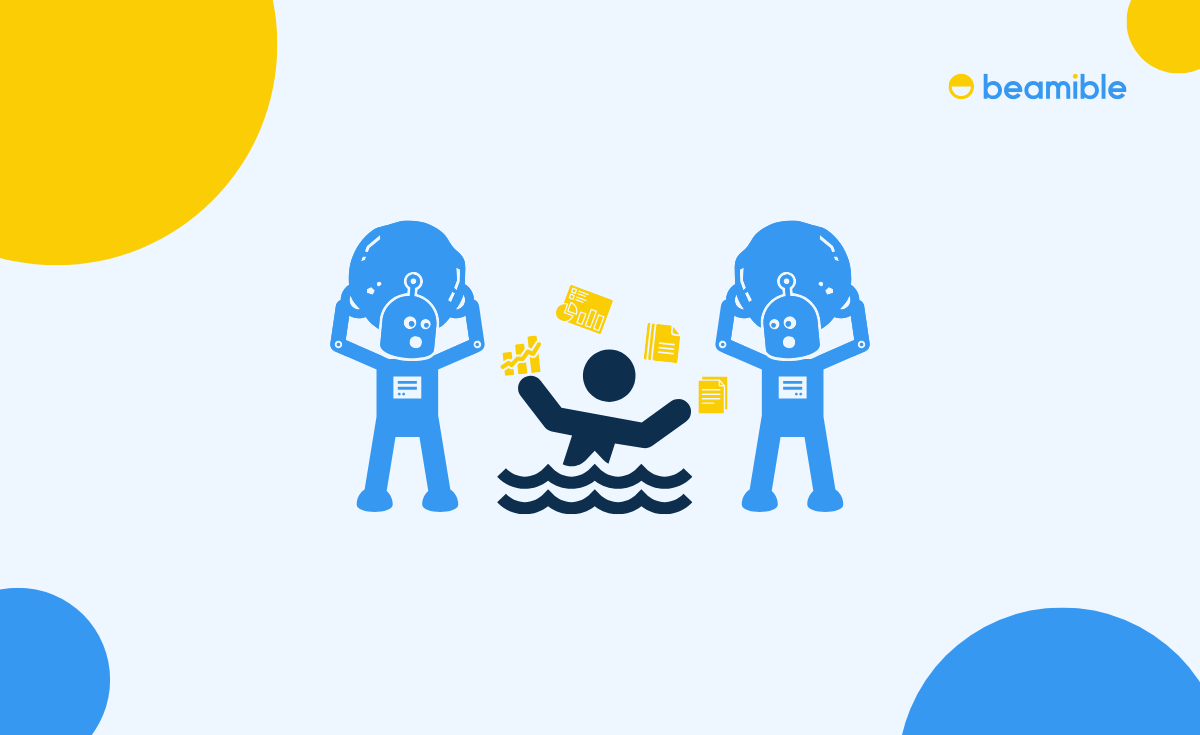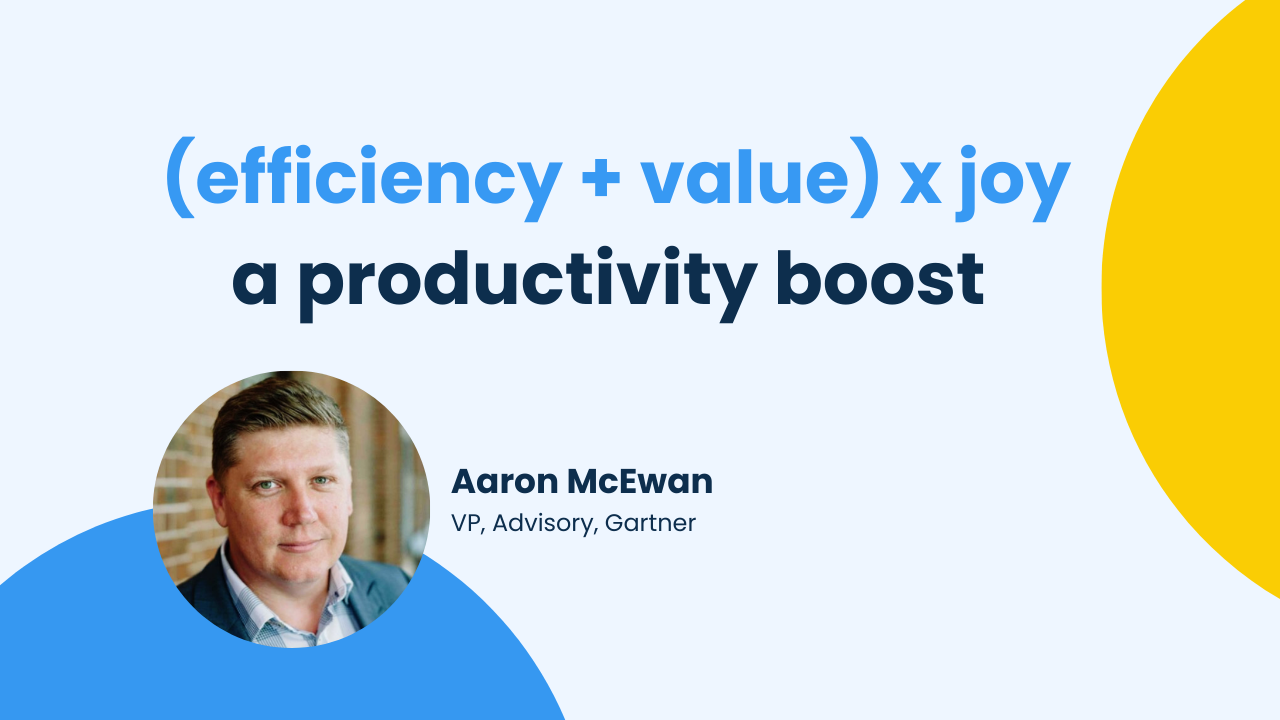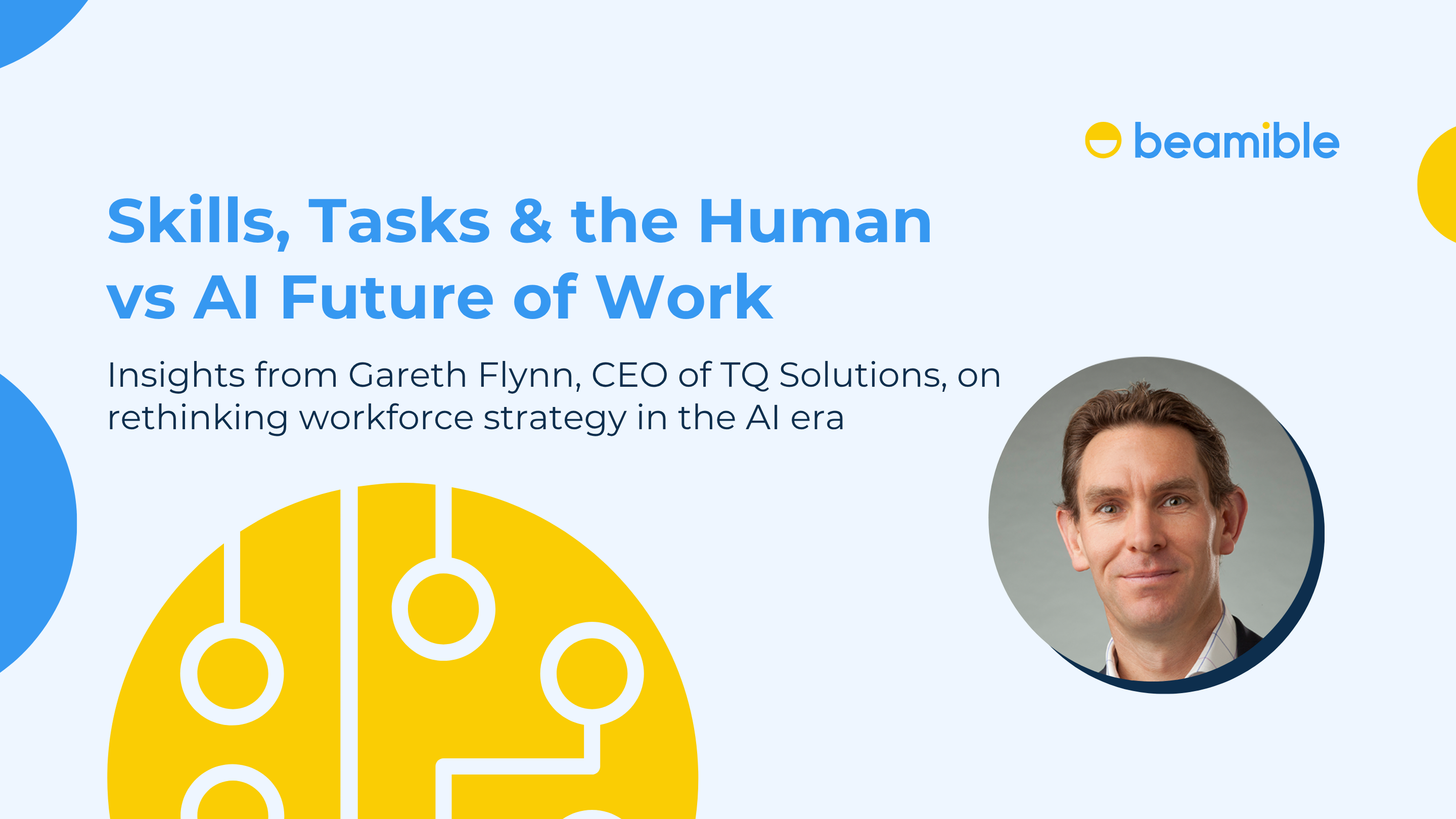Introduction
As companies grow and change, so do the challenges they face. Whether it’s employee burnout, balancing hybrid work, or finding the best way to introduce AI, large organisations have a lot on their plates. Recently, Beamible hosted a webinar that dived into some of the most common challenges we hear about and shared practical solutions to help teams stay focused, productive, and engaged.
The Four Biggest Workforce Challenges in Large Organisations
1. Re-evaluating Organisational Structure and Operating Models
As workflows and structures have become more dynamic, organisations need to step back and evaluate whether they are truly aligned with their goals. Stephanie Reuss, co-founder of Beamible, noted that organisations are “stopping to sit back and ask: What are we trying to achieve? Are we correctly resourced? Do we have the right operating model?”
Beyond evaluating operations, this process involves reassessing organisational efficiency, team roles, and how effectively structures serve customer needs and employee well-being. Actively listening to employees and addressing psychosocial hazards—such as work stress and burnout risks—are essential for keeping the organisation responsive and supportive. By focusing on these foundational aspects, organisations can keep up with changes and reconfigure outdated processes for better outcomes.
2. Keeping Employees Engaged and Preventing Burnout
Employee engagement is no longer just a nice-to-have—it’s essential. People want work that has meaning and is sustainable.Many companies have started taking proactive steps to support mental health, such as offering flexible schedules and reasonable workloads. This shift is crucial for keeping employees engaged and helping them avoid burnout. “Companies are asking employees questions like, ‘What energises you?’ and looking at workloads to prevent burnout,” said Steph, explaining how engagement surveys have evolved to focus on well-being.
3. Supporting critical but problematic Roles
Some roles naturally come with more pressure, and middle managers often bear the brunt of organisational change. They’re tasked with meeting the needs of both their teams and upper management, which can make burnout more likely.
“Middle managers are under a lot of strain,” noted Steph. “We see organisations focusing on them and understanding what’s going on for that group to improve the employee experience.” It’s essential to check in with people in these roles, find out where they need more support, and provide resources to help them manage their workload.
4. Using AI and Automation to Improve Work
AI is a powerful tool, but it can raise questions about job security. Used well, AI can reduce routine tasks and give employees more time to focus on meaningful work. Sarah Kruger, CPO and Human Capital Strategy Specialist, explained that companies should focus on productivity first, not just cost: “It’s not about replacing roles, it’s about using AI to help the people in those roles.
The goal is to help teams be proactive, not just react to cost-cutting.” Companies can avoid potential morale issues by clearly communicating that AI is there to help—not replace—employees. This approach boosts productivity and helps people see AI as an asset.
Practical Tips for Tackling These Challenges
Tip 1: Prioritise Productivity over Cost-Cutting
When cost-cutting takes priority, employees may feel undervalued, leading to lower morale. Instead, companies that focus on helping teams work effectively tend to see better engagement and motivation.
Sarah Kruger highlighted the need to put people first, explaining, “If you always start with cost-cutting, you’ll miss the chance to build engagement and productivity. You have to ask: How can we help our people work more effectively?” Shifting from a cost-centric approach to one that prioritises productivity can lead to better outcomes.
Tip 2: Bring Employees into the Conversation
The people who do the work often know exactly what needs to change. Regular feedback loops—whether through surveys, team meetings, or 1:1s—give employees a voice in improving their work environment. “Employees and executives both want to work more efficiently,” noted Steph. When your team feels like an active part of the solution, they’re more likely to support changes and stay engaged.
Tip 3: Focus on Skill Development and Growth Opportunities
Ongoing development isn’t just for new hires. Creating training programmes, mentorship opportunities, and paths for growth helps employees feel supported and motivated to learn new skills. For high-stress roles especially, having a clear path for growth can reduce turnover and support employees in managing their career progress. Invest in training for both technical skills and “soft” skills like leadership and communication to build a more resilient workforce.
Tip 4: Set Clear Goals and Manage Workloads Carefully
Clarity on goals and priorities helps prevent teams from feeling overwhelmed. By setting clear, realistic expectations, companies give employees a better sense of purpose and focus. Regularly assess workloads to make sure people aren’t stretched too thin, and adjust as necessary to meet deadlines without burnout. Remember that prioritising critical tasks and helping teams focus on fewer, more meaningful projects often leads to higher-quality work and more satisfied employees.
Tip 5: Use AI to Complement, Not Compete with, Your Team’s Skills
Automation and AI are powerful tools for taking on repetitive tasks and reducing workload strain. However, AI is most effective when it’s used to enhance, rather than replace, human roles. Organisations should start by identifying repetitive or time-consuming tasks that AI can handle, freeing employees to focus on high-value work that requires critical thinking and creativity. Vic, Co-CEO of Beamible, underscored this by explaining, “Understanding how AI is helping (or not helping) the team informs adjustments we can make to fine-tune how AI is used.”
Clear communication around AI’s role is also key to building trust, as it reassures employees that AI is a support tool, not a threat. By gathering ongoing feedback on AI’s impact, companies can ensure that it is genuinely helping and make adjustments as needed to optimise its role in supporting productivity.
Tip 6: Promote a Culture of Sustainable Work
A sustainable work environment goes beyond offering flexible schedules or mental health days. It’s about creating well-designed roles with manageable and tolerable work demands. By addressing psychosocial hazards—like chronic work stress or unrealistic deadlines—organisations can prevent costly risks related to employee health and safety. This includes designing roles that are aligned with employees’ capacity and ensuring that workloads do not contribute to burnout.
Companies are increasingly aware of the legal and organisational costs associated with psychosocial risk claims, which can arise when these hazards go unchecked. Building a sustainable culture involves setting realistic workload expectations and supporting employees in achieving a healthy work-life balance that promotes long-term engagement and productivity.
Conclusion
Organisations that take a practical, people-first approach to tackling today’s workforce challenges are more likely to thrive. By focusing on productivity, supporting engagement, and using technology thoughtfully, teams can find ways to work better together. For those ready to make a change, start by choosing one area to improve and building from there.
🎥 Want to dive deeper into these strategies? Register to re-watch the full webinar here.





